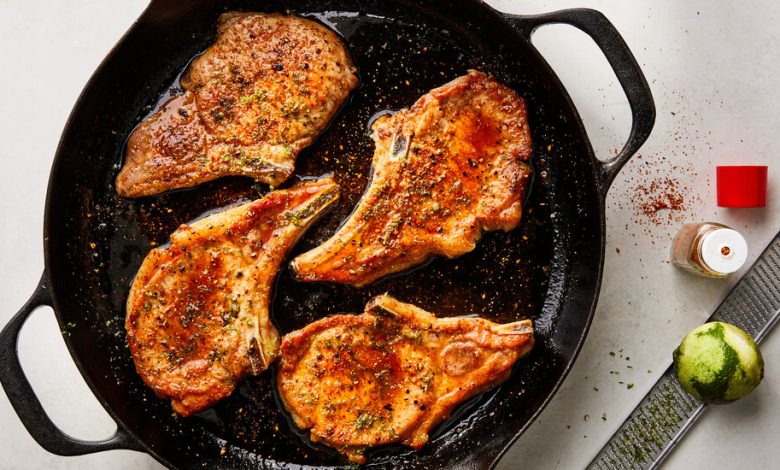This Store-Bought Spice Blend Makes Everything Taste Better

At Sushi Yoko in Norcross, Ga., as at Japanese restaurants across the world, each booth has a red-capped bottle of shichimi togarashi, the seven-spice blend that makes food taste spicy, savory, nutty and electric all at once.
This combination delivers an exciting interplay of dried red chile, orange peel, sesame seeds (both black and white), sansho peppercorns, seaweed and often ginger. It enhances food without overpowering it, which is why everyone should keep a bottle in the pantry.
Recipe: Maple-Soy Pork Chops With Shichimi Togarashi
“Shichi” means seven, and “togarashi” refers to the Japanese red chile that grounds the mix. The six other ingredients depend on the brand and, when made at home, on the cook. Some variations might include poppy seeds, hemp seeds and yuzu peel. A successful shichimi togarashi (sometimes called nanami togarashi) offers a kaleidoscope of tastes, each turn of the tongue showing off a new combination.
Sushi Yoko’s chef, Tomonori Nakamura, likes to dust it over yakitori but wants his customers to use it on whatever they like. A bowl of his tempura udon wouldn’t be complete without a sprinkle of shichimi, which, at his diner-like restaurant, you can find next to the salt and pepper shakers and soy sauce decanter.
Rie McClenny, whose debut cookbook “Make It Japanese” (written with Sanaë Lemoine) comes out this month, uses it as a finishing spice for soba, deviled eggs and tonjiru, a pork and vegetable soup flavored with miso. It lends a layered spiciness, she said, with pops of mildness from sesame and citrus, and soothing warmth from sansho pepper.
Ms. McClenny first saw an application of shichimi togarashi in a non-Japanese setting as an intern at a restaurant in the Manhattan neighborhood of NoLIta. The spice blend was added to melted butter, which then coated fried chicken wings to astounding results. “It opened my eyes,” she said.
Though shichimi togarashi is classically used in Japanese cuisine as a finishing spice, there are many ways to extend its multidimensional flavors beyond a last-minute sprinkle. In this easy weeknight recipe, lime juice and a touch of soy sauce accentuate the citrusy, savory spice, especially once reduced to a sticky pan sauce for slicking pork chops. A dusting of shichimi tastes even more brilliant when bloomed in the pork’s fat; maple syrup carries all seven of its flavors, as does a final gloss of butter.
It’s “Japan’s go-to spice,” the chef Brendan Liew writes in his cookbook “Tokyo Up Late.” I’ve been known to sprinkle shichimi togarashi over chocolate chip cookies fresh out of the oven and a platter of just-fried chicken karaage, or to gently awaken it in a warm pool of olive oil before tossing with noodles.
Whether you keep that red-capped bottle next to your salt and pepper shakers is up to you, but your world will certainly be better for it.
Follow New York Times Cooking on Instagram, Facebook, YouTube, TikTok and Pinterest. Get regular updates from New York Times Cooking, with recipe suggestions, cooking tips and shopping advice.



